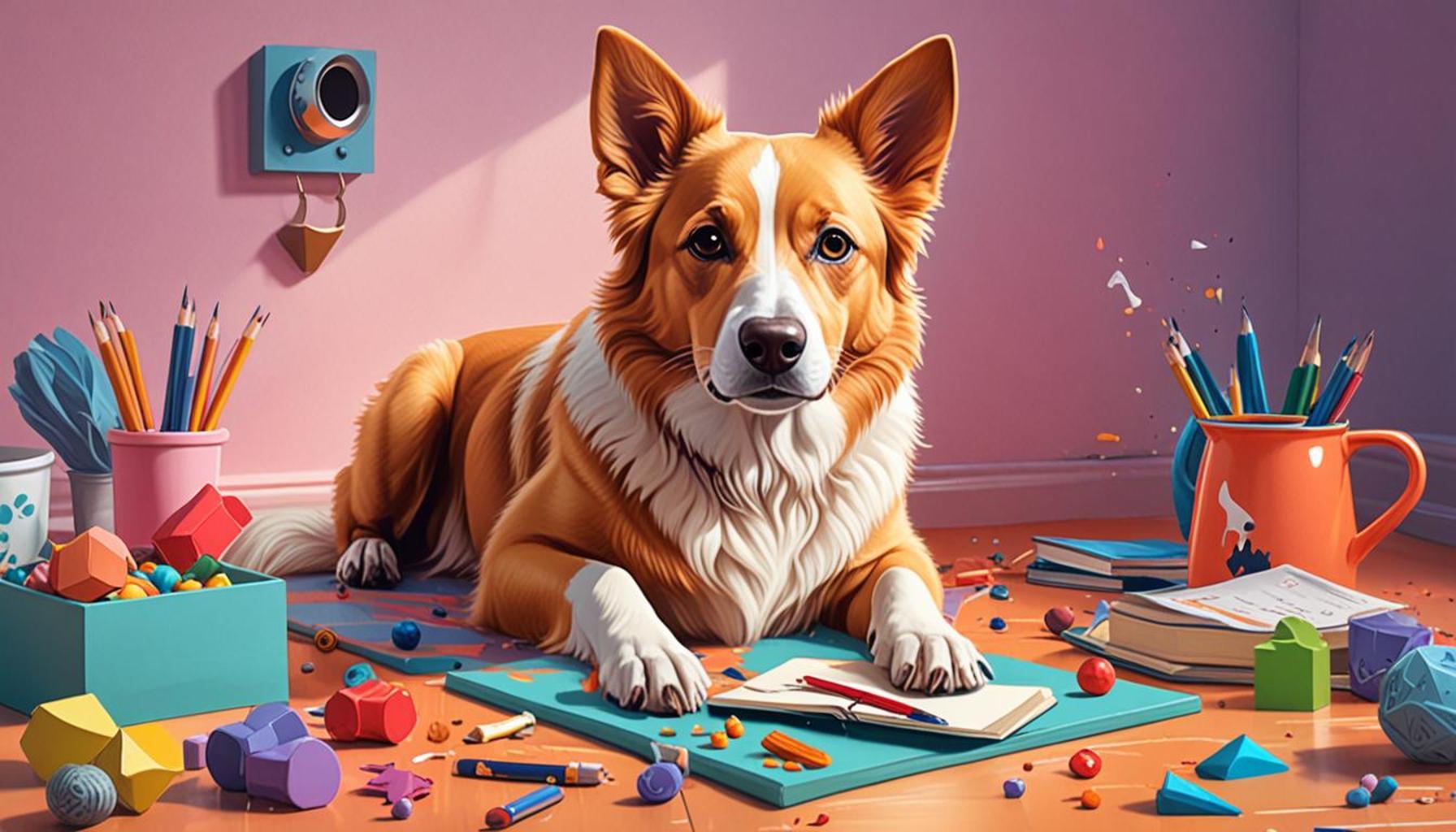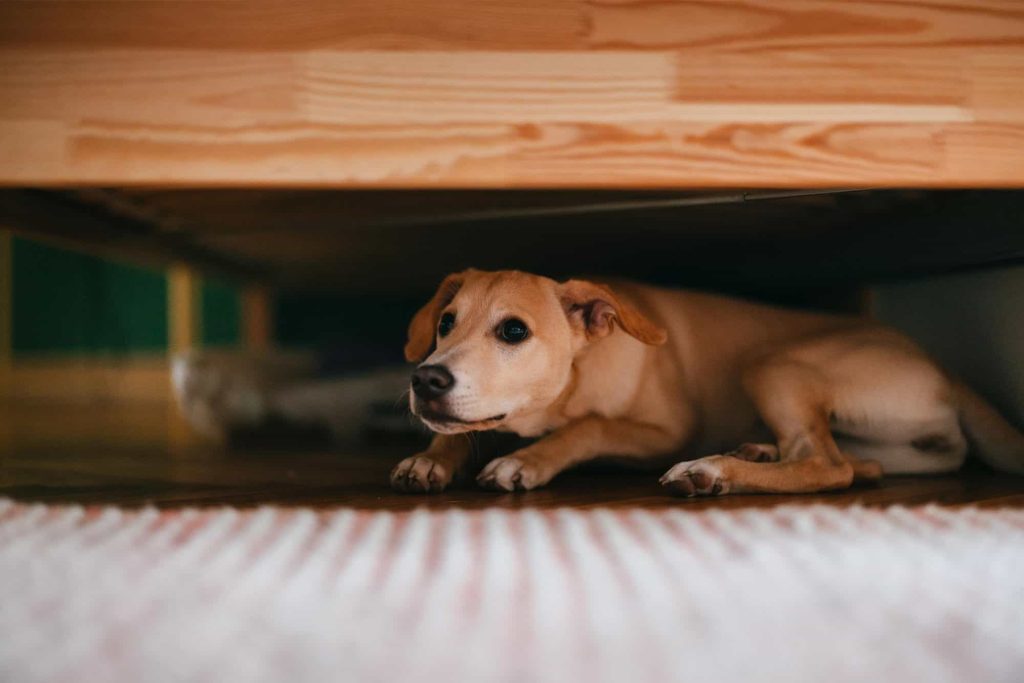Strategies for Dealing with Separation Anxiety in Dogs

Understanding Canine Separation Anxiety
Separation anxiety in dogs is a challenging issue that many pet owners face, especially as busy lifestyles lead to longer hours spent away from home. This emotional disturbance can result in a range of problematic behaviors, causing distress not just for the dog but also for the overwhelmed owner. Recognizing the symptoms of separation anxiety and implementing effective strategies can dramatically improve life for both parties involved.
Common Signs of Separation Anxiety
Dogs experiencing separation anxiety may display various signs that can be alarming to their owners. Some of the most common indicators include:
- Excessive barking or whining when left alone, which can lead to complaints from neighbors and may result in further stress for the owner.
- Destructive behavior, such as chewing on furniture, shoes, or even their own paws. This often stems from a desperate need to cope with the anxiety of being alone.
- Potty accidents in the home, even if the dog is previously house-trained. This behavior often occurs because the dog is too anxious to relax and do its business outside.
Identifying these signs early is crucial for effective intervention. Pet owners in the United States often find themselves needing to manage this condition, particularly for breeds that are naturally more prone to anxiety, such as Labrador Retrievers, Border Collies, or Bichon Frises. Understanding the unique characteristics of these breeds can assist in better handling their anxiety.
Innovative Solutions to Explore
When it comes to addressing separation anxiety, there are numerous strategies that can be employed to ease your dog’s distress. Consider a combination of the following methods:
- Gradual desensitization involves slowly getting your dog accustomed to being alone for short periods before gradually extending the time. Start with just a few minutes and extend as your dog’s comfort grows.
- Interactive toys can keep your dog occupied and distracted. Puzzle toys that dispense treats can stimulate their mind while you are away and reduce feelings of loneliness.
- Professional training programs focused on anxiety can provide invaluable assistance. Trainers specialized in behavioral modifications can offer tailored techniques to help your dog manage their anxiety effectively.
Each dog is unique, and what works for one may not work for another. Therefore, patience is vital as you explore various options. Monitoring your dog’s behavior and adjusting your approach based on their response is essential. Consulting with a veterinarian, particularly one who understands behavioral issues, can also provide additional insights and treatment options. By investing time and effort into managing separation anxiety, you can significantly enhance your dog’s well-being, leading to a happier, more relaxed pet and a more harmonious home life.

DISCOVER MORE: Click here for valuable tips
Effective Strategies for Easing Your Dog’s Separation Anxiety
Addressing separation anxiety in dogs is essential for fostering a peaceful environment both for the pet and the owner. The good news is that various strategies exist to mitigate this emotional struggle. By understanding these methods and implementing them consistently, pet owners can significantly reduce their dogs’ anxiety, promote good behavior, and enhance their overall well-being. Here are some effective strategies to consider:
Create a Safe Space
Establishing a comforting area for your dog can make a world of difference. Dogs often seek refuge in cozy spots when they’re feeling anxious. This space could be a designated room or a quiet corner with their bed or favorite blankets. By making this area inviting and filled with familiar scents, you can help your dog feel secure while you’re away. Additionally, adding items like chew toys and safe play objects can provide further comfort and distraction.
Practice Departures and Arrivals
The way you leave and return home can significantly impact your dog’s anxiety levels. Dramatic farewells or greetings can heighten their stress. Instead, practice calm and low-key interactions. Here’s how:
- Short, calm departures: When leaving, keep your goodbyes brief and low-stress. Avoid prolonged farewells that may signal anxiety to your dog.
- Quiet returns: Upon coming home, refrain from overwhelming your dog with attention immediately. Wait until they settle down to greet them without adding to their excitement.
This practice helps your dog learn that you leaving and coming back is a normal part of their daily routine, reducing the anxiety associated with these events.
Utilize Technology
In the modern age, technology can play a crucial role in mitigating separation anxiety. Consider the following tools:
- Dog cameras: These allow you to check in on your pet during the day. Some even have two-way audio, so you can speak to your dog and offer soothing words.
- Automated treat dispensers: Setting up timed treat dispensers can keep your dog stimulated and reward them for being calm while you’re away.
These technological solutions can provide reassurance both for you and your dog, fostering a sense of connection even when you’re apart.
By employing these strategies, owners can create a conducive environment that alleviates pressure on their dogs. As with any behavioral modification, consistency is key. Gradually incorporating these methods into your routine will help your dog adjust better, ultimately leading to a more comfortable and harmonious living situation. Always remember that patience and understanding are vital in the process of dealing with separation anxiety in dogs, paving the way for improved mental health and happiness for your beloved pet.
Strategies for Dealing with Separation Anxiety in Dogs
Separation anxiety in dogs is a pervasive issue affecting their emotional well-being and behavior. Understanding and addressing this dilemma requires a comprehensive approach involving training, environmental adjustments, and emotional support. By implementing effective strategies, pet owners can significantly reduce their dog’s anxiety and promote a more peaceful home environment.
Understanding the Causes
To deal with separation anxiety effectively, it’s crucial to identify the causes. Factors such as past trauma, changes in the household, or insufficient socialization can contribute to a dog’s anxiety. Recognizing these triggers will allow you to tailor your approach to better meet your dog’s unique needs.
Training Techniques
Utilizing positive reinforcement training techniques can greatly help in alleviating anxiety. Gradually increasing the time spent apart from the dog during training sessions can help them adjust to your absence. Consider rewarding your dog with treats and praises when they exhibit calm behavior during these small separations.
| Category | Features |
|---|---|
| Gradual Desensitization | Slowly increasing separation times to build comfort. |
| Creating a Safe Space | Using a cozy area with toys to ease anxiety. |
Environmental Modifications
Altering your dog’s environment can alleviate some stress. This may include providing them with toys, puzzles, or interactive games that can occupy their mind while you’re away. Practice leaving a radio or TV on to create a soothing ambiance and reduce feelings of loneliness.
Professional Help
If separation anxiety persists despite your best efforts, consider consulting a professional dog trainer or a veterinarian. They can recommend suitable treatment plans, which may include behavioral therapy or medication to help your dog cope better during separations. Remember, every dog is unique, and finding the right strategy can be a process that involves patience and observation.
Conclusion
With dedicated effort and a proper understanding of your dog’s needs, you can help them overcome separation anxiety, ensuring a happy and healthy relationship.
DIVE DEEPER: Click here to learn more
Additional Techniques for Managing Your Dog’s Separation Anxiety
While creating a safe space and utilizing technology are foundational steps in addressing separation anxiety in dogs, several additional techniques can further support your efforts. These methods focus on enhancing your dog’s mental stimulation, emotional well-being, and training, helping to diminish their reliance on your presence for comfort.
Engage in Regular Exercise
Physical activity plays a vital role in a dog’s overall mental health. Engaging your dog in daily exercise can help reduce their anxiety levels by releasing pent-up energy and promoting relaxation. Activities such as walks, fetch, and agility training not only strengthen the bond between you and your dog but also provide essential mental stimulation. Consider scheduling longer walks or adventure outings before work or outings, allowing your dog to burn energy before facing time alone.
Positive Reinforcement Training
Incorporating positive reinforcement training can be a powerful strategy to alleviate separation anxiety. Reward-based training encourages good behavior and fosters a sense of security. This can include:
- Desensitization to being alone: Gradually get your dog accustomed to your absence by starting with short periods alone, then gradually increasing the duration. Make sure to reward them with treats and praise when they remain calm.
- Teaching independence: Incorporate basic commands such as “stay” and “go to your bed.” This process will empower your dog to feel more secure when you leave.
Using a training method like this reinforces a positive association with being alone, reducing their anxiety over time.
Try Calming Aids
With a growing array of products designed for anxious dogs, you may consider utilizing calming aids to help soothe your pet during your absences. Options include:
- Herbal supplements: Many natural herbs such as valerian root, chamomile, and L-theanine are renowned for their calming effects. Consult your veterinarian before introducing any new supplements.
- Comfortable apparel: Products like anxiety wraps or calming jackets can apply gentle pressure to your dog’s torso, creating a sensation similar to swaddling that can soothe anxiety.
These calming aids can provide an extra layer of comfort to your dog, especially during longer periods when you’re away from home.
Consider Professional Help
If your dog’s separation anxiety proves to be particularly severe, it may be beneficial to seek help from a professional dog trainer or animal behaviorist. These experts can provide personalized strategies tailored to your dog’s unique needs. Furthermore, in some cases, veterinary intervention may also be necessary, as a vet may recommend medication to help manage your dog’s anxiety while you work on behavioral modifications.
Whenever tackling separation anxiety, patience is an essential virtue. Each dog is unique, and what works for one may not for another. Through perseverance and the implementation of these tailored strategies, you can help your dog navigate their feelings of anxiety, leading to a more harmonious living environment.
DISCOVER MORE: Click here to learn how pets can boost your empathy
Conclusion
In conclusion, managing separation anxiety in dogs requires a multifaceted approach that blends patience, understanding, and effective strategies. The foundational elements of creating a calming environment and leveraging technology set the stage for further interventions. Incorporating regular exercise not only provides physical benefits but also serves to alleviate anxiety through the release of pent-up energy. Additionally, positive reinforcement training fosters a sense of security and independence in your dog, encouraging them to feel secure when alone.
Moreover, exploring calming aids such as herbal supplements and anxiety wraps can offer additional relief, allowing your pet to cope with anxiety more effectively. For those facing more severe cases of separation anxiety, reaching out to a professional dog trainer or veterinarian can provide invaluable guidance tailored to your dog’s specific needs.
Ultimately, each dog is unique, and it is crucial to remain observant and adaptable throughout the process. It’s important to remember that the journey to managing separation anxiety is not an overnight fix but a gradual path toward comfort for both you and your beloved pet. By diligently applying these strategies and nurturing your bond, you can create a supportive environment that fosters tranquility and joy, leading to a fulfilling companionship. Your efforts will ultimately change both your lives for the better, making homecomings something to look forward to, rather than a source of stress.



